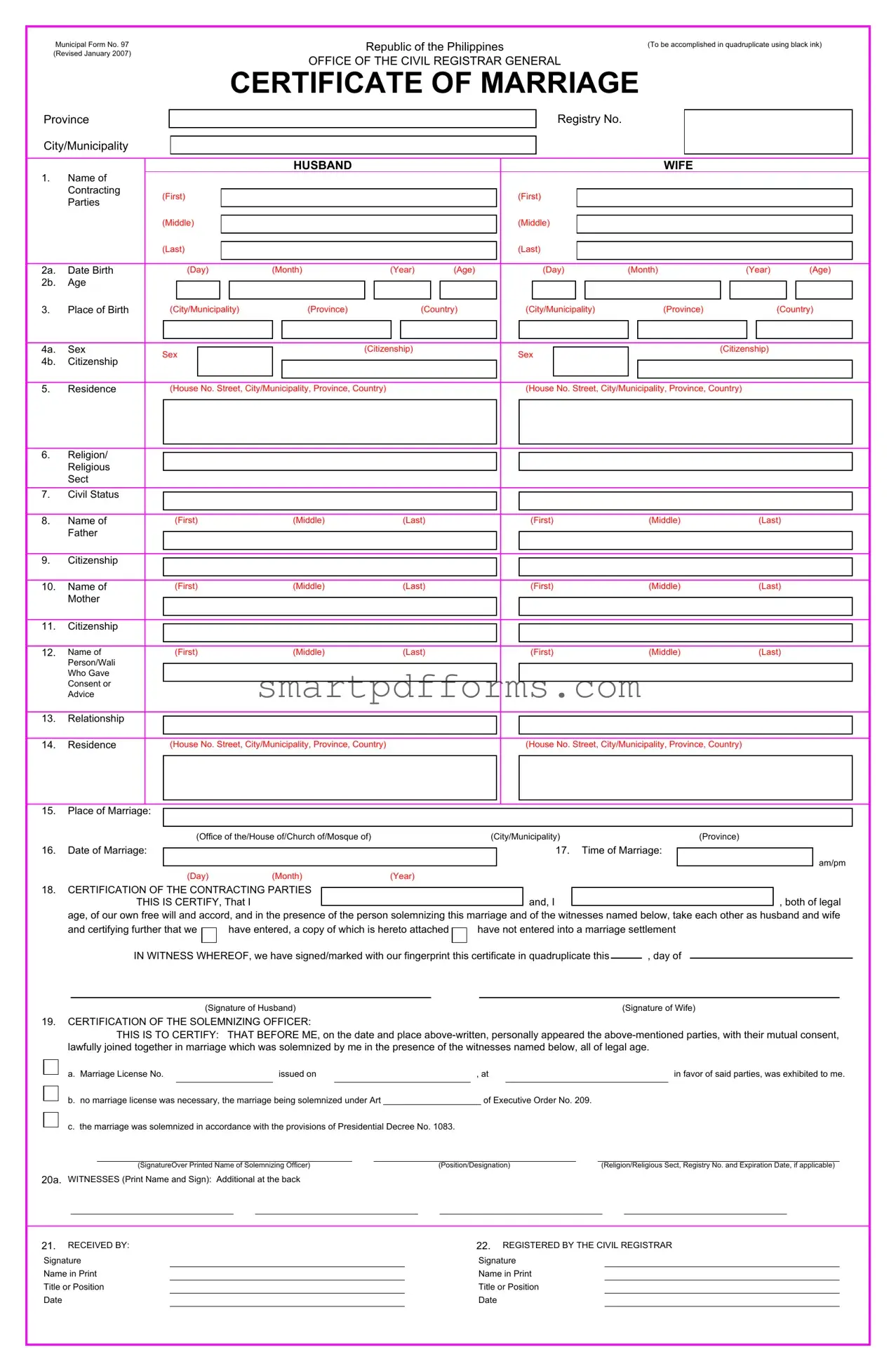Understanding the intricacies of the No. 97 Marriage Form, as outlined by the Republic of the Philippines, offers a comprehensive glimpse into the formalities of marital union registration within the country. Revised in January 2007 and mandating completion in quadruplicate using black ink, this document plays a crucial role in the official acknowledgment of a marriage by the Office of the Civil Registrar General. It meticulously records not only the personal details of the husband and wife, such as names, dates of birth, places of birth, sex, citizenship, and residences, but it also delves into their religious affiliations, civil statuses prior to marriage, and the particulars of their parents. Critical to the process is the inclusion of consent or advice given for the marriage, highlighting the importance of family or guardian approval within the cultural context. Furthermore, the form specifies the need for details about the marriage ceremony itself, including the location, date, time, and the solemnizing officer's certification, which validates the marriage's legality and compliance with national laws. Witnesses and the solemnizing officer provide certification, underscoring the communal aspect of marriage, while additional sections cater to unique circumstances such as marriages conducted in articulo mortis, among Muslims or members of ethnic cultural communities, or those requiring delayed registration. The No. 97 Marriage Form embodies a blend of legal requirement and cultural observance, serving as a vital record for couples, the state, and posterity.

